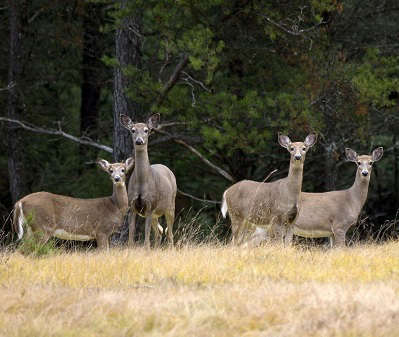Buckwheat Fills the Gap
By Glen Wunderlich
With the recent and predictable news of the expansion of the Chronic Wasting Disease (CWD) management areas in southern Michigan, the handwriting is on the wall. The practice of deer baiting, as we’ve known it, is on the way out. Certainly, the producers of carrots, beets, etc. will not be happy, as the convenience store/gas station demand is sure to drop in the affected areas. So, you want change? It’s here.
While baiting and feeding in the Lower Peninsula becomes less acceptable, food plots are a sure-fire means to increase one’s hunting chances in the fall, if you have access to private land. One who works the land not only gains an advantage for hunting purposes, he has the ability to provide nourishment to wildlife throughout the year. With the proper balance of perennial and annual plots, deer, turkeys, rabbits, pheasants, and other game animals may just call your habitat home.
Deer like variety in their menu. To add to a whitetail’s choices before fall planting, I’ve chosen a small strip of land that can be an attraction until then by planting buckwheat.
Buckwheat (Fagopyrum esculentum) is a warm-season annual forb that can provide several benefits to a whitetail food-plot program. Frost will kill it, so it’s important to sow the seed when the danger of frost is past. Likewise, in the fall the buckwheat leaves will vanish with the first frost, so it will only be available for the summer months, or even less if your plan includes planting more hardy species in August, such as brassicas.
The Quality Deer Management Associaiton notes that buckwheat produces well in poor soil and actually builds weak soil for future plantings. Buckwheat matures very quickly – approximately 10 weeks after germination and will begin to bloom within two weeks of germination. Crude protein levels in buckwheat forage are quite impressive, ranging from 15 to 25 percent in well-managed soils. The plant residue increases organic matter and releases a significant amount of phosphorus that will be available for your fall plantings, improving the nutritional quality while reducing fertilizer costs. If you have a relatively small area you’d like to experiment with and have no need for a 50-pound bag, locally Family Farm and Home sells buckwheat in bulk at a cost of approximately $1.70 per pound. If planting in marginal seedbed conditions, consider slightly increasing your seeding rate to account for reduced germination.
Once buckwheat is planted, its rapid germination and growth rate is an excellent weed suppression mechanism. It quickly forms a dense leaf canopy, suppressing many weeds due to the shading/smothering effect.
Many site locations require lime to increase the ph level so that plants can grow vigorously, but only a soil test will tell the story. For best results, get the lime into the soil as early as possible – 3 months or more before planting.
In any case, time’s a wasting, if you’d like to reap the rewards of a fall planting. For a good reference, check out Ed Spinazolla’s book, Quality Deer Food Plots or his website http://deerattraction.com/




